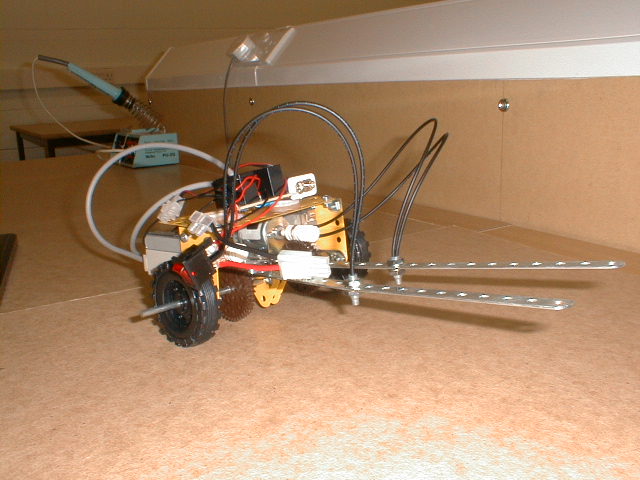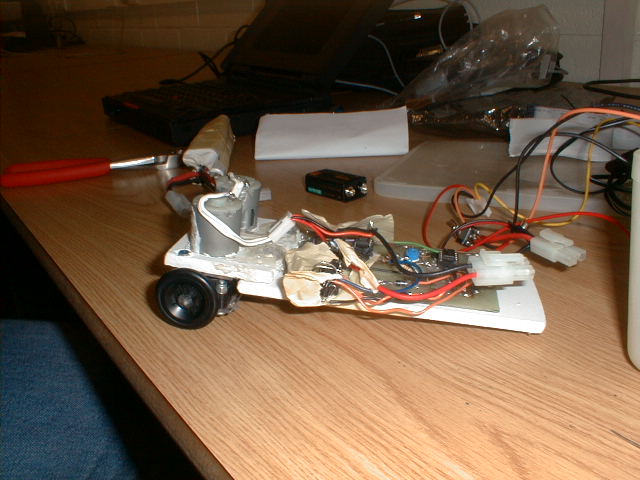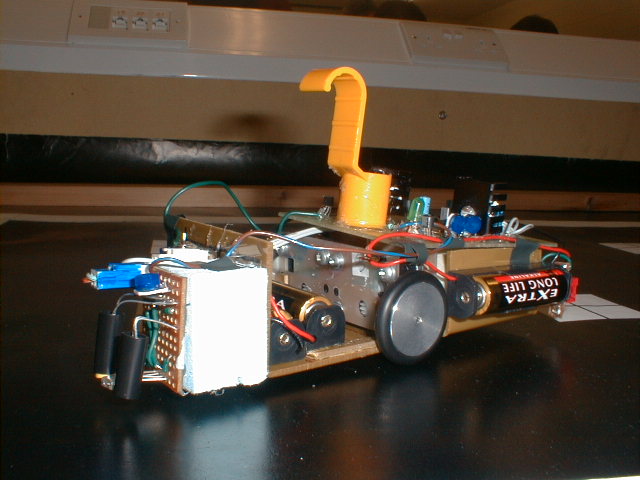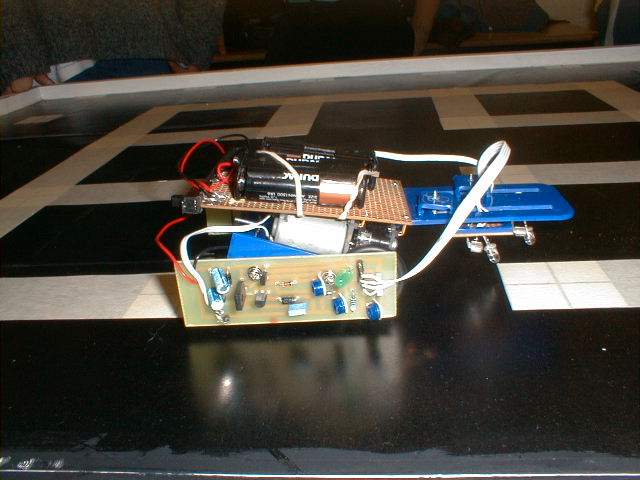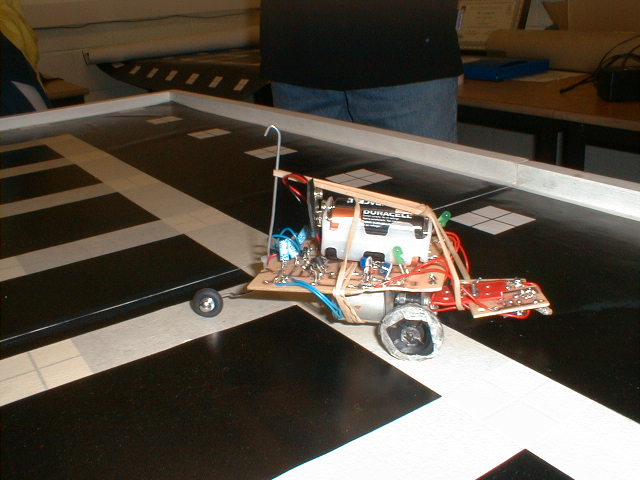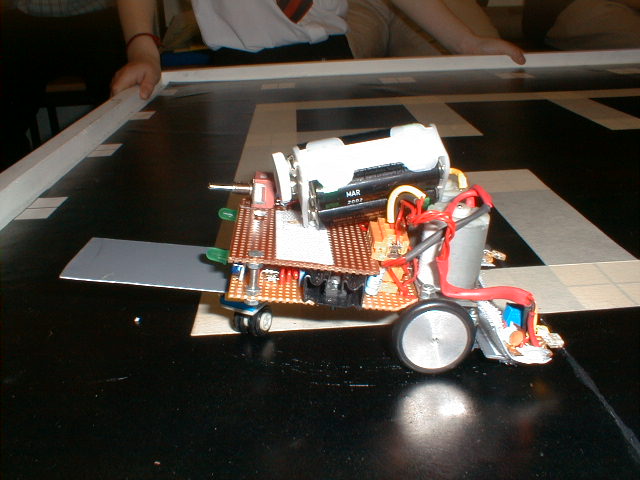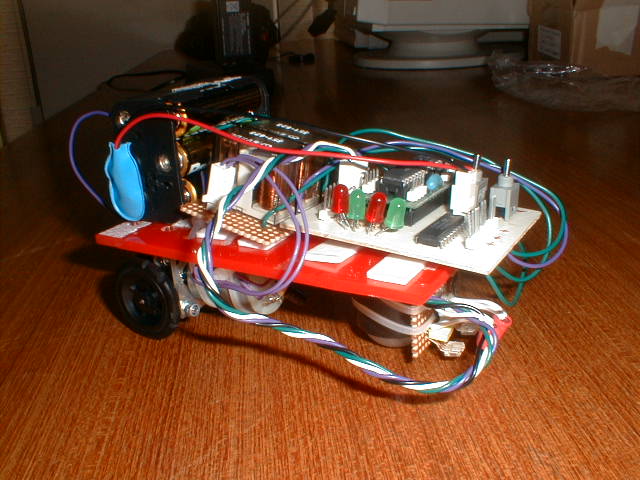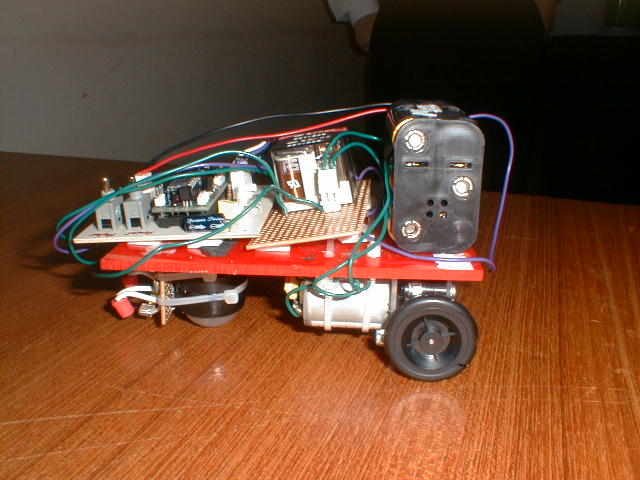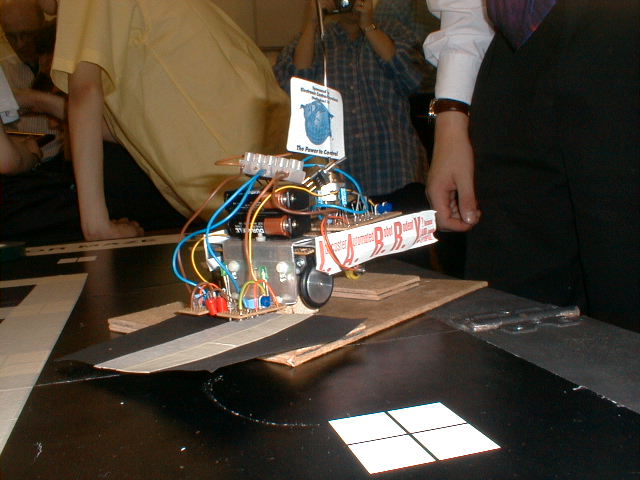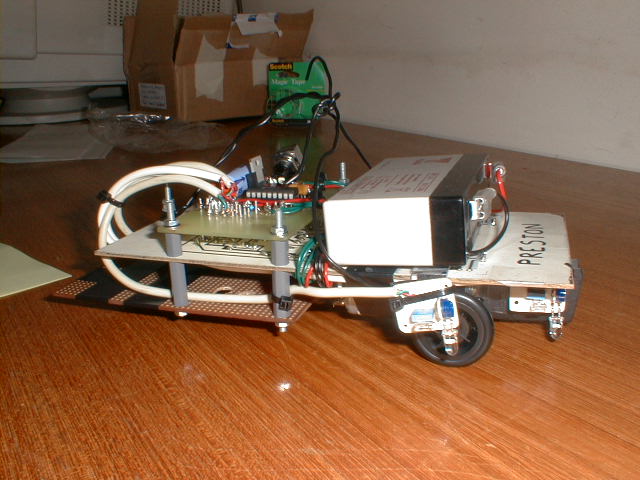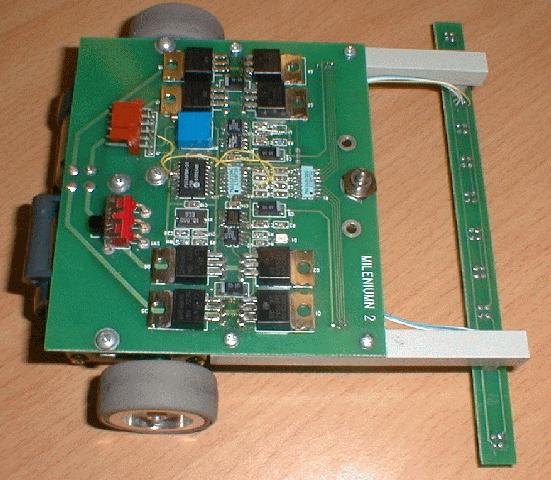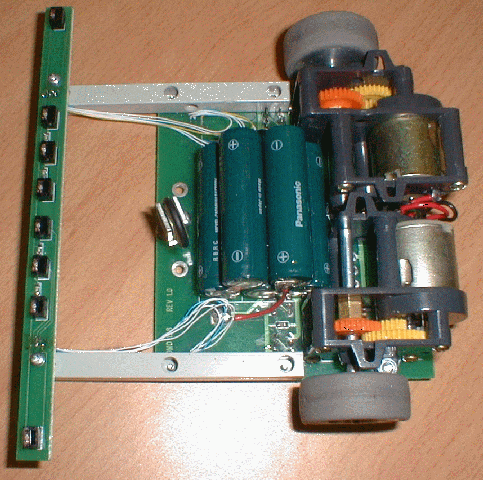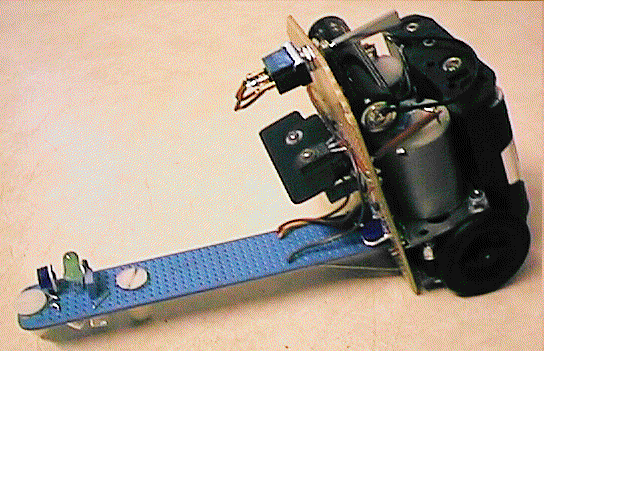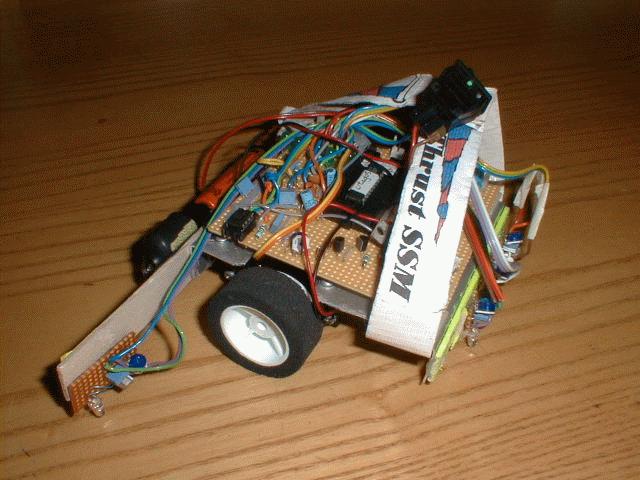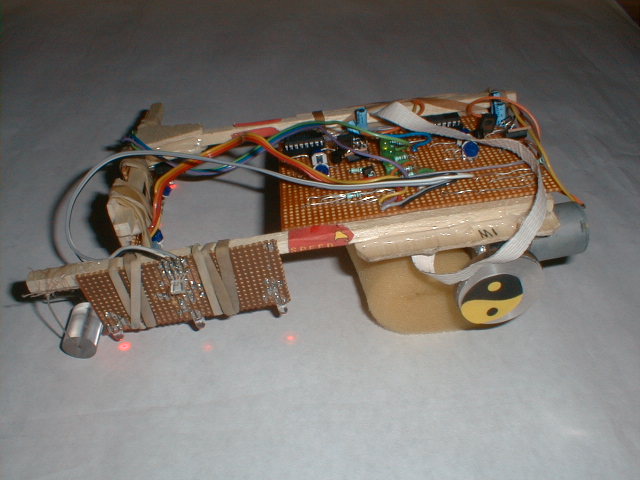|
|
The mice This is a bit of a gallery of mice that I had chance to photograph. Most of them use DASH materials but there are other interesting ones included.
This is Bancroft School's LIONEL. It uses very powerful radio control car motors and very clever (and expensive) light sensors. It was reliable and fast.
This is Porchester Community School's CHARLIE. It is based on a DASH FREE kit. Unfortunately it was damaged in transit and, despite an emergency motor transplant in the pits, it failed to get to the finals.
This is Dane Court Grammar School's JIM. DASH FREE based, you can see how the sensors have been moved forward to cope with longer breaking distances. This team is one of the few who took notice of the lifting hook rule. Notice how the batteries have been distributed to best effect.
I am not sure which mouse this is due to a cock-up with labelling. It is possibly Sawston Village College's LES SCARGO. If you know what it is please email me to let me know.
They have made proper PCB's for the DASH FREE circuitry and this has probably paid off in reliability. You can see that the sensors are mounted on slots for ease of adjustment.
This is Sawston Village College's RAMPANT BEAST. It also uses a DASH FREE kit but has a trailing castor to minimise friction and the wheels have been coated with what looked like silicone rubber bath sealant for extra grip.
This is St. Benedicts R.C. High School's TEAM SPIRIT. The castor is LEGO but they had to use super glue on the mounting to stop it coming apart. They spent a lot of time on the practice mat in the pits solving problems but they did manage to run a time in the final.
These are two views of Bolton School's BENJAMIN. It uses DASH FREE components for the drive train and sensors but they use a processor and relays for motor control. It competed in the super standard class and ran very well.
This is Lancaster Grammar School's LARRY. It is DASH FREE based and well presented. You can see that they are using a jig to keep the wheels off the ground while they adjust the sensors.
This is Newcastle Royal Grammar School's PRESTON. It uses DASH components and is intended for the super standard class. The sealed lead-acid battery is heavy but does mean that there is a lot of power available.
These are two views of James Ottens MILLENNIUM 2. It is very high-tech with a PIC processor on board and a custom surface-mount printed circuit board. It has competed all over the world.
This is Woodbridge school's SNIFFER. This shows excellent design in terms of layout and weight distribution. Note the use of a nylon nut as a low-friction slider. This is probably as good as a DASH FREE gets without active braking, grippier tyres or wide-area sensors. http://www.argonet.co.uk/users/woodbridgesch.dt/
This is Ysgol Gyfun Aberaeron's Y SAETHWR (the ARCHER)
Stephen Eakins and Creag Louttit's THRUST SSM. This mouse uses an Atmel AVR 1200 chip, our motors with home-brew gearboxes using our gears, Hamamatsu sensors and a lot of development time.
Creag Louttit and Stephen Eakins' S.P.E.E.D. This is a DASH FREE with bigger wheels and grippier tyres. It has been modified for 3 sensor inputs and active braking on both wheels. The two outer sensors are area coverage type with three LEDs each. This is probably as sophisticated as a DASH FREE gets.
 HOME PAGE
HOME PAGE PIXIE
PIXIE DASH FREE
DASH FREE